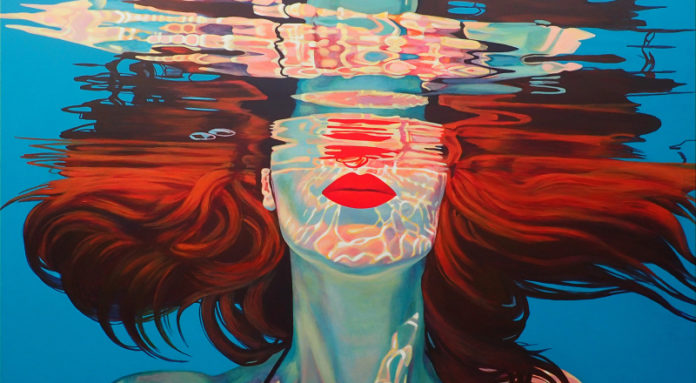Art is often dismissed as a viable investment vehicle because it’s illiquid, its value is subjective, and it can take years to pay off.
However, it’s rising in popularity among savvy investors, and an annual report from Art Basel put the international art market at $67 billion in 2018.1 Art investors are quick to point out that this asset class could hold the key to diversification. Further, Deloitte reported in 2017 that 55% of their wealth managers have clients asking for advice on investing in art and collectibles.2
In addition to portfolio diversification, investing in art has the following benefits:
- Art is an established market. People have been trading, dealing, and investing in art for hundreds of years.
- The value of art isn’t as affected by trends, unlike other investments like baseball cards and bitcoin.
- Art is portable. In war, emergencies, and other crises, you can remove artwork from a frame, roll it up, and take it with you. A million-dollar piece of art can weigh under a couple of pounds, while $1 million in $100 denominations weighs 22 pounds. A million dollars of gold weighs more than 55 pounds.
When investing in art, we don’t mean canvas prints from Z Gallerie or buying a piece from your neighbor’s talented middle schooler (although, imagine if that paid off!). Instead, we’re referring to fine art.
Fine art is defined as museum-quality pieces. The artist should have at least one piece in a museum, or their talent should be worthy of museum placement. That worthiness can be hard to identify, but appraisers, curators, art experts, and gallery owners have a sense of top talent and rising stars.
How to Invest in Art
Art is relatively easy to acquire, but that doesn’t mean you should walk into your nearest gallery and write a check. A thoughtful approach that aligns your goals and investment budget is vital for your success.
Here are some ideas to consider as you begin navigating the art world:
Buy the Big Names
A Monet, Picasso or Warhol is likely to be out of reach for most people. Larger works can command millions of dollars. However, there are ways to get a Picasso for mere thousands. The secret is to find sketches, which aren’t classified official as “works of art,” but still have considerable value and rise along with the rest of an artist’s catalog.
Or, Find Rising Talent
If you’ve got a good idea or you can work with an artist or consultant, you could score a gem that skyrockets in value in a relatively short amount of time. Global art events like Art Basel, with shows in Basel, Hong Kong, and Miami Beach are an excellent way to discover museum-quality talent in the contemporary space at moderate prices.
Choose a Market
There is more than one way to buy art, but if you’re just starting out, then you might want to visit galleries first. You’ll pay higher prices, but you’ll get certificates of authenticity and guarantees that the piece is legitimate. In the unlikely event you end up with a fake, the gallery is liable.
Auctions are another option. You’ll rub elbows with other art enthusiasts, and the experience can be fun and exhilarating, as well as financially rewarding. Just make sure you do your research before you go. Determine what your limits are before getting caught up in a bidding frenzy.
There’s also a vibrant online marketplace for art. It can be risky to buy online, especially if you’re not familiar with the website selling the art. Make sure you do your due diligence before purchasing anything. If you do go online, you have the potential to discover emerging talent, and many sites offer complementary services from curators and consultants.
One site that has a diverse array of prices and styles is Saatchi Art. The selection is dizzying, so it’s a smart idea to join their Curator’s Circle for curator-guided tours and one-on-one advice.
Invest in an Art Fund
If you’d rather not bother with acquiring specific pieces and deal with the storage and maintenance of the works, you could choose to invest in an art fund.
The way funds work is that you invest money (often, there’s a 6-figure minimum), and then the fund manager buys art. When the fund manager sells the art, you get your share of the proceeds.
If you invest in a fund, one of the first things to do is ensure that the person who’s managing the fund is not a dealer, as that would present a conflict of interest. Instead, look for one where the fund sponsor also has an investment. This distinction signifies that the sponsor has skin in the game, and it provides assurances that your interests are aligned.
A final caution about art funds is to avoid any fund that has a market or fee back provision. These provisions allow a fund manager to take a commission when the value of the art rises, but they don’t issue a corresponding refund with the value of the art declines. Instead, look for a fund where the manager doesn’t take any fees until the art is sold and everyone gets paid.
At the time of this newsletter publication, the top 3 art funds are:
- Anthea – Their top-performing investment had a return of 404.3%.
- Artemundi Global Fund – If you’re an art lover, then this is the fund for you. Investors get the opportunity to hang pieces on the wall so that you can have an ever-revolving wall of valuable art displayed in your home.
- Liquid Rarity Exchange – This fund purchases the rarest, finest pieces, potentially offering the highest rates of return.
Whether you choose to buy art outright or invest in a fund, there’s no doubt that art is one of the most beautiful assets you can have in your portfolio! If you love art, then investing in it is a win-win.
- https://www.artbasel.com/about/initiatives/the-art-market
- https://www2.deloitte.com/lu/en/pages/art-finance/articles/art-finance-report.html








